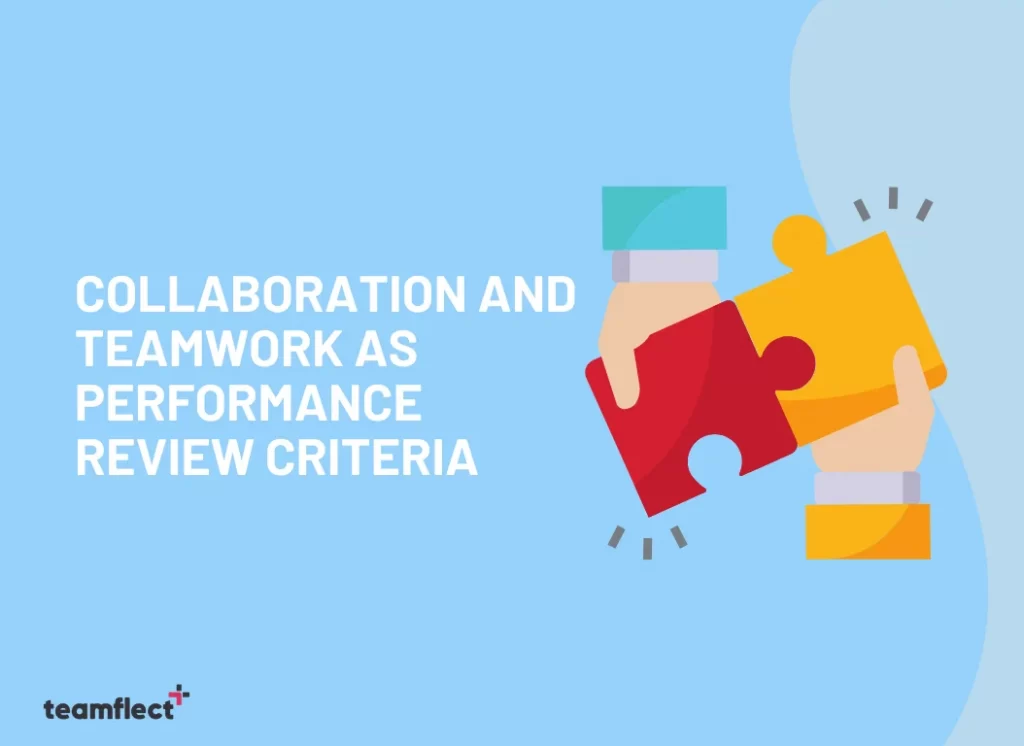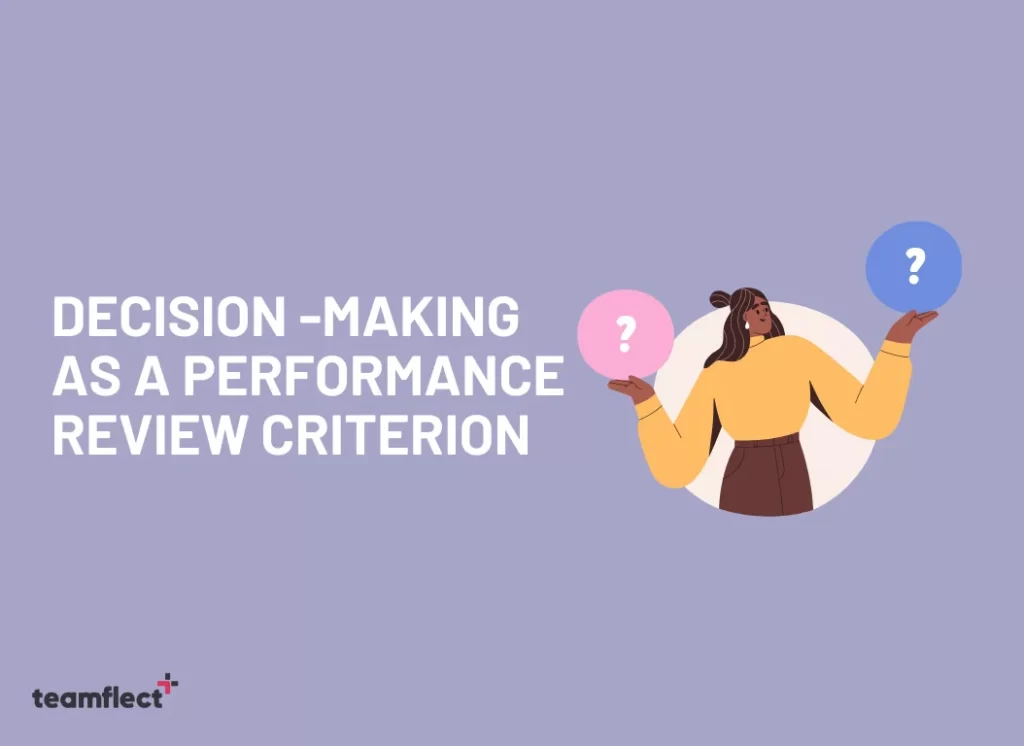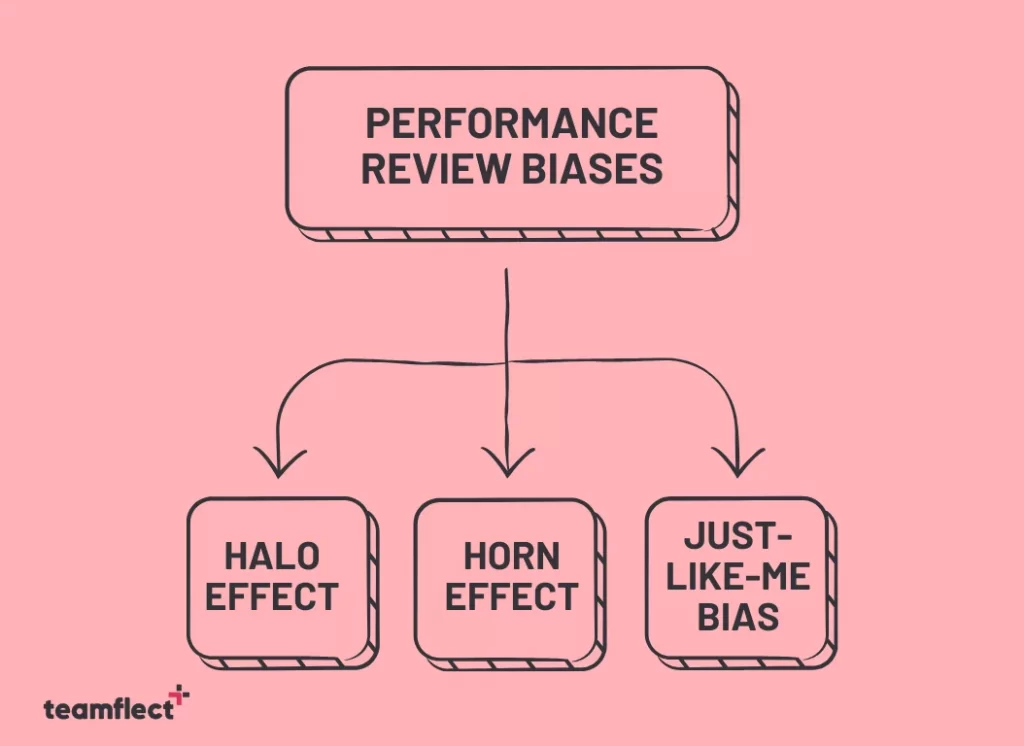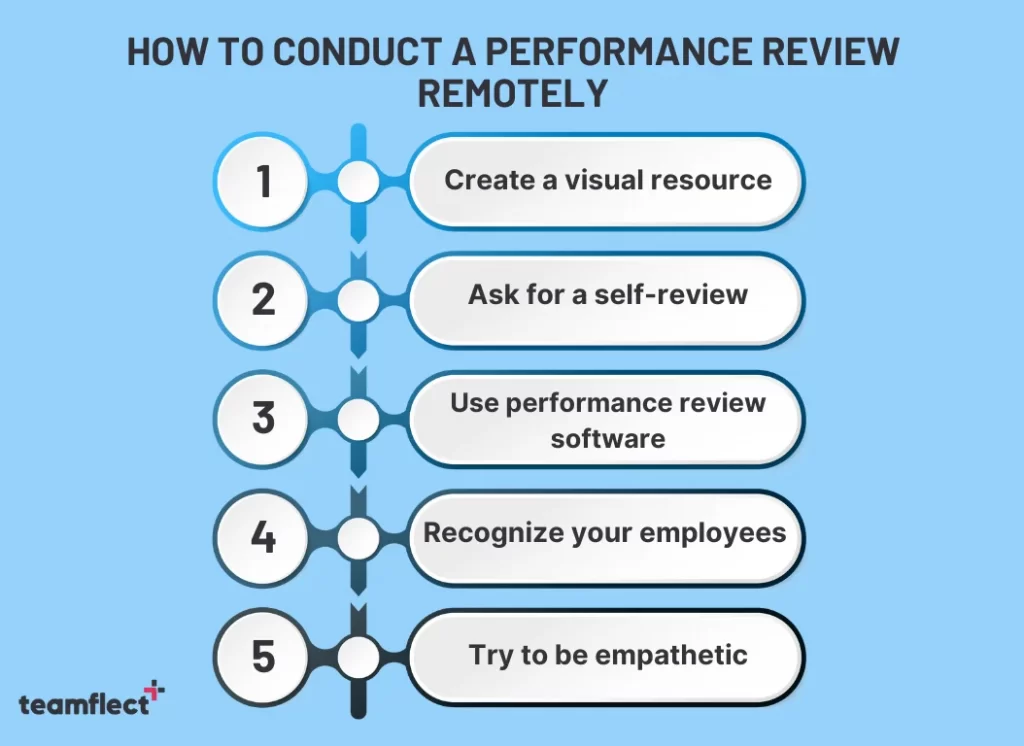The process of comprehensive assessment of contributions, an opportunity to talk about strengths and weaknesses while providing a roadmap for professional development within a company. What are we describing here? Here is another hint: it goes by many names!
Yes! We are talking about performance reviews today! More specifically, how to write a performance review in the best way possible!
Without further ado, let’s discuss employee reviews in a detailed way and help you write the best performance review with ease!
Table of Contents
What to Assess in Performance Reviews?
To answer the question, “How to write a performance review?” we first need to address which criteria to include in employee reviews. Performance review expectations can be more specifically determined by considering your industry. However, the performance review criteria examples below can be used in any industry.
1. Skills
A skilled employee is the one who possesses skills that are relevant to their job.
Criteria Examples:
- Displays effective communication skills.
- Good at problem-solving and critical thinking.
- Quickly adapts to new technologies.
2. Level of expertise
The aim of using this criterion is to understand the level of proficiency in job-related topics.
Criteria Examples:
- Has a deep understanding of job responsibilities and procedures.
- Can use job-relevant tools, software, equipment with ease.
- Applies their knowledge to solve problems related to work.
3. Quality of work
With this criterion you are evaluating the degree of excellence of the employee’s work.
Criteria Examples:
- Displays ability to produce work with a high degree of precision.
- Actively seeks ways to enhance the quality of work.
- Engages in quality assurance practices to verify the accuracy of work before submission.
4. Quantity of work
This is important because the amount of work an employee can produce is a component of productivity.
Criteria Examples:
- Successfully meets all project deadlines and task timelines.
- Prioritizes tasks effectively to ensure timely completion.
- Achieves a high level of efficiency in task completion.
5. Collaboration and teamwork

Collaboration and teamwork, in other words, being able to work effectively with colleagues, is important because it creates harmony among employees and harmonious work relationships boosts creativity.
Criteria Examples:
- Participates in team discussions and meetings and shares ideas.
- Proactively offers assistance to colleagues, ensuring collective success.
- Builds positive working relationships with team members, promoting a harmonious team environment.
6. Punctuality and attendance
How often an employee is absent from work and how punctual they are at work are among the essential performance review criteria.
Criteria Examples:
- Maintains an outstanding record of attendance.
- Ensures minimal disruptions to team workflow by being reliable when it comes to attendance.
- Communicates in advance when they have to be absent from work.
7. Initiative
With this criterion, you measure an employee’s level of independence when it comes to starting new projects and tasks.
Criteria Examples:
- Actively seeking innovative ways to improve processes.
- Takes the initiative to acquire new skills or certifications.
- Actively generates and proposes new projects, initiatives, or ideas.
8. Customer service
It’s being able to delight the customer with your customer service.
Criteria Examples:
- Consistently receives high ratings from customers.
- Effectively addresses customer inquiries, concerns, and complaints.
- Goes above and beyond to ensure customer satisfaction.
9. Flexibility
With this criterion, you are assessing how flexible an employee is when challenges and new situations emerge.
Criteria Examples:
- Quickly adjusts to changing circumstances, priorities, or tasks.
- Displays willingness to take on new responsibilities when needed.
- Adapts to new technologies, processes, or procedures with ease.
10. Time management
It assesses how effective an employee is at managing their time which includes timely completion of tasks.
Criteria Examples:
- Consistently delivers work on time, meeting project deadlines.
- Prioritizes tasks effectively to ensure timely completion of critical assignments.
- Identifies opportunities to reduce time wastage.
11. Decision-making

This criterion includes being logical and effective at decision-making by managing risks and researching before making decisions.
Criteria Examples:
- Evaluates risks and benefits thoroughly before making choices.
- Consistently produces decisions that align with the company’s values and goals.
- Able to identify and define challenges within the organization.
12. Communication
It includes being transparent, open, and effective when it comes to communication.
Criteria Examples:
- Actively listens to colleagues, team members, and stakeholders.
- Asks clarifying questions to ensure comprehension and shows empathy toward others’ perspectives.
- Provides constructive feedback to colleagues respectfully and helpfully.
13. Leadership
A leader who demonstrates this criteria is influential and inspirational for their employees.
Criteria Examples:
- Nurtures the development of team members through mentoring and coaching.
- Empowers team members to take ownership of their work .
- Displays the ability to lead by example by showcasing the desired values and behaviors.
14. Organization skills
An employee who can juggle different tasks effectively and who can make meaningful contributions possesses organization skills.
Criteria Examples:
- Excellently prioritizes tasks based on their urgency and importance to the organization.
- Displays an organized approach to handling multiple assignments.
- Keeps workspaces, calendars, and to-do lists well-organized.
How to Write a Performance Review
Gallup found that only 14% of employees think performance reviews are motivating. This indicates that managers should incorporate new strategies into employee reviews. The steps below answer the question “How to write a performance review?” in a way that is practical and useful.
1. Collect important information
While writing employee reviews you should try to be as comprehensive as possible and include more than the past performance.
To write the best work performance evaluation, first, you need to collect important information such as self-reviews, useful data, and, goals. You can do this by including your one-on-one meeting notes, recognition examples, projects and products where the employee contributed and feedback from stakeholders.
2. Stay objective and avoid biases

Managers try to be as objective as possible. Managers can read about common biases at work and see if they exhibit any of them. Here are the three common performance review biases:
- The halo effect: Perceiving your employee as flawless.
- The horn effect: Everything an employee does is construed as negative and useless.
- The-just-like-me bias: When you share similarities with an employee and rate them more positively.
3. Start with the positive
To reinforce future performance, you need to start with the positive. This will set the tone for the rest of the performance review. Knowing they are appreciated by you, your employees will be comfortable when you discuss the weaker areas of their work.
4. Include constructive criticism
You need to address your employees’ weaknesses because if they are clueless about the weaknesses they can’t improve and grow. However, constructive criticism requires you to be careful with your wording.
Here are three examples of constructive criticism that are paired with a strength of the employee:
- “You work effectively individually, but there’s potential to enhance your collaboration within the team. You may consider taking the initiative to share your expertise and ideas more proactively.”
- “While your content is solid, your presentation skills could use improvement. You can work on your delivery, body language, and engagement with the audience.”
- “You handle conflicts professionally, but there have been occasions when the resolution process could have been more efficient. Try addressing issues early and seeking mediation if necessary.”
5. Incorporate 360-degree feedback
You’ve read about biases and you’re aware of the possible negative impacts of biases on employee reviews. Another way of avoiding bias is incorporating 360-degree feedback.
To incorporate 360-degree feedback, you need to add examples from self-reviews, as well as peer and manager reviews. This will allow you to see employee performance from every angle and provide more detailed feedback.
6. Act like a mentor
Employee mentors assist their mentees in developing professionally. They resemble a teacher who is supportive of their students and who provides them with honest feedback. This relationship based on encouragement makes mentees feel supported and comfortable.
Thus, by using a mentoring approach during employee reviews, you will also give your employees a sense of security and support.
How to Conduct a Performance Review Remotely
We talked about how to write a performance review. Now it’s time to discuss how you can conduct employee reviews remotely. Below you can find five elements for conducting a remote performance review.

1. Create a visual resource
To make sure you and your employees are on the same page, you can prepare slides or visual resources. In these visual aids, you can include relevant written communications and shoutouts.
Since visuals help you sustain and increase attention, you will be able to concentrate on the performance review more easily. They will allow you to make sure nothing important is forgotten and they serve as a baseline for future employee reviews.
2. Ask for a self-review
Self-reviews are important because they help you understand how employees perceive themselves. They might be content with their performance and therefore complacent while you think they have weaknesses that need to be addressed.
Or, the exact opposite might be the case. After reading the self-review, you may realize that your performance review criteria don’t include the critical points that your employees talked about in their self-assessment. By using self-reviews both you and your employees can gain insight.
Additionally, self-reviews are great opportunities to see how employees want to grow professionally.
3. Use performance review software
You can’t manage a remote team without software. And if you’re ambitious with your goals, you need a solution that ticks all the boxes. Teamflect which is an extremely useful tool for performance reviews will tick all of your boxes!
- Efficiency? ✅
- User-friendly? ✅
- Cost-effective? ✅
- Reliability? ✅
- Customizability? ✅
Teamflect allows you to customize, digitize, analyze and automate your performance reviews with ease. Our performance review solution helps you to:
- Customize your performance review templates.
- Complete the review cycles inside Microsoft Teams.
- Easily identify areas for growth and employee milestones.
- Integrate seamlessly with Outlook.
- Integrate with employee-specific goals and OKRs.
- Create rich and powerful insights with our reports.
- Customize each step of the performance evaluations.
If you are asking the question “How to conduct performance reviews in Microsoft Teams?” you can watch our video above to learn how you can conduct reviews in Microsoft Teams through the best performance review software.
4. Recognize your employees’ contributions
Solely focusing on mistakes and weaknesses will not be effective in motivating your employees. People need to feel appreciated to be more ambitious. If all you talk about is weaknesses, then your employees might feel like there is no need to try because their efforts and contributions are invisible.
5. Try to be empathetic
Employee reviews can be intimidating for employees, especially if they are being conducted remotely. Therefore, you need to provide suggestions and advice while giving constructive criticism.
While doing so you should be empathetic by making actionable suggestions so that your employees can understand they can improve their weaknesses.
How to Write A Performance Review For Remote Teams: 7 Useful Tips
The performance review process can seem very different in remote work since it’s hard to see if someone is in the office or not. However, it’s still important to keep the process in place and observe the same protocol as you would if employees were in the office every day. Keeping this point in mind, we have come up with seven valuable tips.
- Establish a baseline: In a performance review, you must establish a baseline for each team member’s current performance and set goals for how much they should progress by their next review.
- Focus on individual goals: It may be hard to hold an in-person performance review if you’re evaluating someone working remotely. Instead, focus on meeting with each team member individually and customizing performance reviews for that person, every year or quarter.
- Create an engaging conversation: When team members work remotely, it’s hard to keep track of how they’re doing. Therefore, managers should engage with remote workers every six months. Most effective managers talk with their remote employees at least once a month.
- Use specific examples: When writing a performance review, you must provide specific examples of behavior that show how your employee is doing their job.
- Spend more time with people who need it most: The performance review process is helpful in part because it encourages managers and employees to sit down in person and think about goals for a given period.
- Ask for input regularly: It’s important that employees feel like they have a voice, so make sure you regularly solicit feedback from remote workers.
- Schedule regular check-ins: Formal check-ins should be scheduled at regular intervals, but managers should also encourage employees to contact them whenever feedback is needed.
Frequently Asked Questions
How do you write a good performance review example?
How to write a good performance review? Writing employee review examples involves several steps. First, you should gather all the necessary data about the employee’s performance over the review period, including specific examples of successes and areas for improvement. Then, you should organize this information into clear categories, such as job responsibilities, communication skills, and teamwork. When writing the review, be specific and provide concrete examples to support your feedback.
What should I say in a performance review?
In a performance review, you should provide feedback on the employee’s strengths and areas for improvement. Start by acknowledging their successes and accomplishments during the review period, then move on to areas where they could improve.
How do you write an effective employee review?
Writing an effective employee review requires careful planning and preparation. Start by setting clear expectations and goals for the employee, and communicate these expectations clearly. Throughout the review period, track the employee’s progress and gather feedback from colleagues and other stakeholders.
How do I write a summary of myself for a performance review?
Reflect on your accomplishments and successes during the review period. Be specific and provide examples to support your achievements. Most importantly, acknowledge areas where you could improve and discuss your goals for the upcoming review period.
How do you write an overall performance summary?
Review all the data and feedback you’ve gathered about the employee’s performance during the review period. Organize this information into clear categories, such as job responsibilities, communication skills, and teamwork. Back all of your claims with concrete examples. When writing performance reviews, it is always a good idea to end on a positive note !
What should a performance review measure?
1. Skills
2. Level of expertise
3. Quality of work
4. Quantity of work
5. Collaboration and teamwork
6. Punctuality and attendance
7. Initiative
8. Customer service
9. Flexibility
10. Time management
11. Decision-making
12. Communication
13. Leadership
14. Organization skills
How to conduct performance reviews in Microsoft Teams?
To conduct performance reviews in Microsoft Teams, you can download Teamflect on Microsoft AppSource and start streamlining your performance reviews right away!





